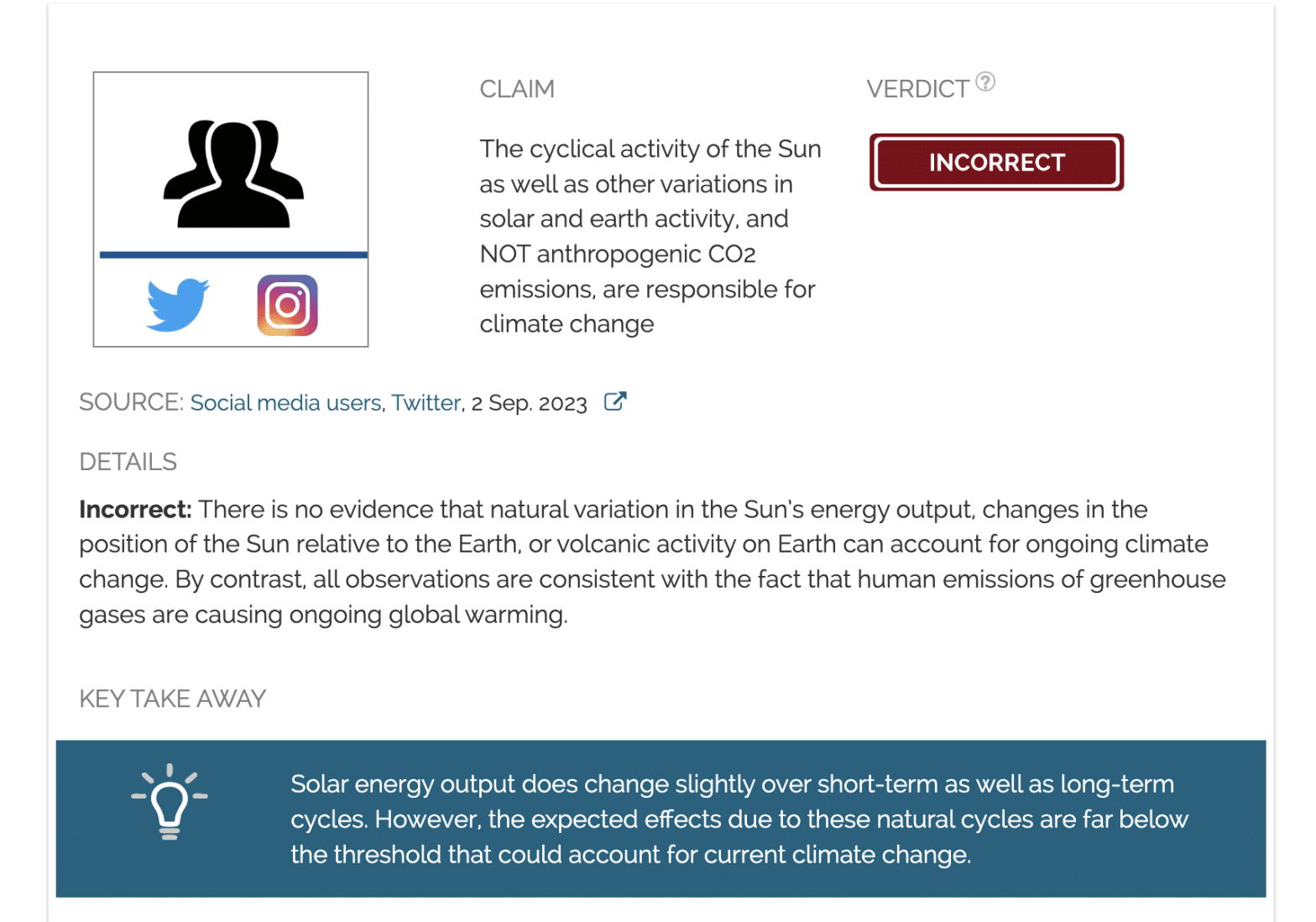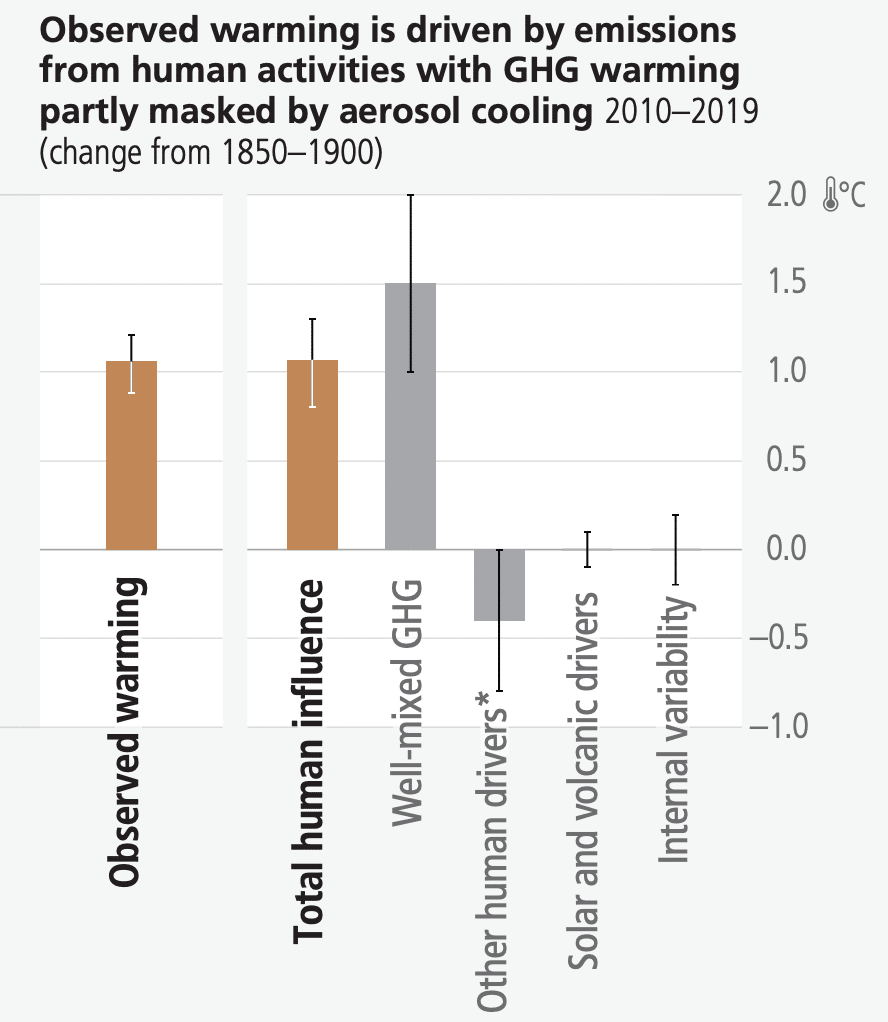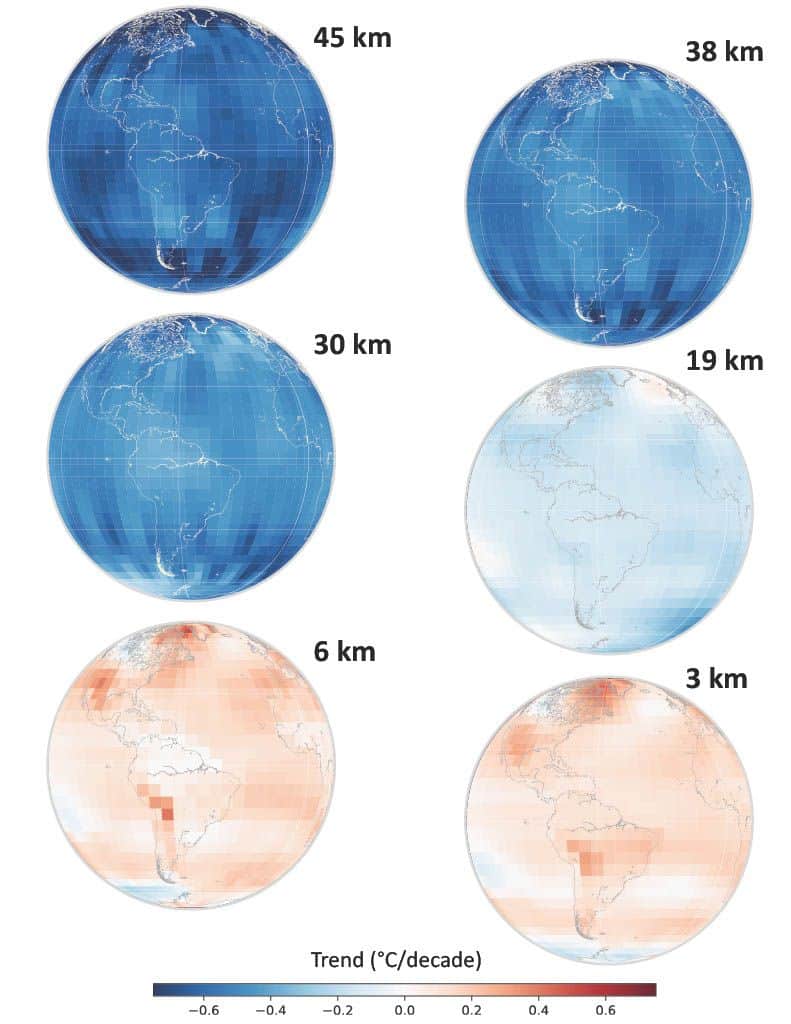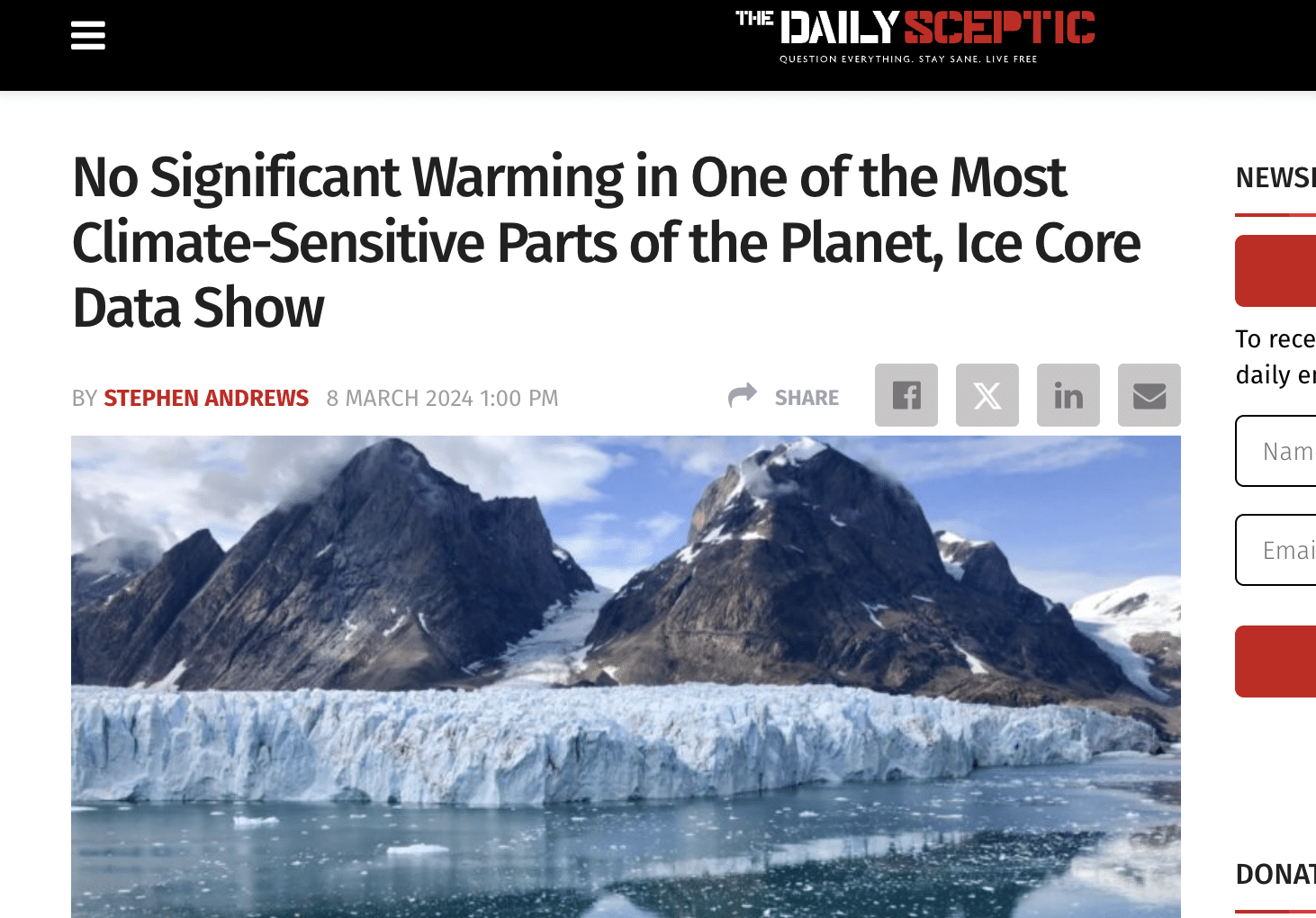- Climate
Claim that current climate change can be explained satisfactorily by natural cycles and volcanic activity does not have scientific support
Key takeaway
Solar energy output does change slightly over short-term as well as long-term cycles. However, the expected effects due to these natural cycles are far below the threshold that could account for current climate change.
Reviewed content

Verdict:
Claim:
The cyclical activity of the Sun as well as other variations in solar and earth activity, and NOT anthropogenic CO2 emissions, are responsible for climate change
Verdict detail
Incorrect: There is no evidence that natural variation in the Sun’s energy output, changes in the position of the Sun relative to the Earth, or volcanic activity on Earth can account for ongoing climate change. By contrast, all observations are consistent with the fact that human emissions of greenhouse gases are causing ongoing global warming.
Full Claim
The cyclical activity of the Sun as well as other variations in solar and earth activity, and NOT anthropogenic CO2 emissions, are responsible for climate change
In a post on X (formerly Twitter) on September 2, a social media user (Robin Monotti) posits that the primary reason for climate change is the cyclical activity of the Sun and the Earth, with volcanic activity also playing a role. Overall, it appears that Monotti’s aim is to imply that while human activity and CO2 emissions might be playing some role in climate change, these are not the main factors. As of the date of publication of this review, the post has been reposted about 5 thousand times and viewed over 1.2 million times. However, in its most recent report on climate change, which constitutes an authoritative review of scientists’ work around the world, the Intergovernmental Panel on Climate Change (IPCC) explains that, compared to the 19th century, global surface temperature has increased by more than 1°C, and this increase can be entirely explained by the influence of human activities. In contrast, the impact of natural (solar and volcanic) drivers on global temperatures is estimated to be 0 plus or minus 0.1°C over this same period[1] (Figure 1).

In his post, Monotti does not specifically state how the cyclical activity of the Sun as well as other factors can cause climate change, but he implies that variation in solar activity and in the Sun’s orbit relative to other celestial bodies, and changes in the Earth’s orbit are sufficient to explain ongoing climate change without recourse to greenhouse gas emissions and human activity. However, there is no evidence that any of these factors can explain the magnitude of the change in the earth’s climate that we are currently experiencing[2].
To address these claims, it is instructive to consider why scientists agree that climate change is man-made and why there is a consensus that it is due to greenhouse gases. On the one hand, this conclusion rests on direct measurements of greenhouse gases in the atmosphere. These measurements have shown that atmospheric CO2 increased by more than 40% from 1800 to 2019. How do we know that this increase is due to human activity? First, the circumstantial evidence: CO2 levels have increased most precipitously since 1970, which was a period that also witnessed a pronounced increase in global energy consumption. Further, the conclusion is based on analysis of the different carbon isotopes detected. Carbon comes in three naturally occurring isotopes: 12, 13, and 14. These numbers refer to the numbers of neutrons in the nuclei of these different isotopes, and the different isotopes are derived from different sources. Plant material is enriched in 12C (Carbon 12), and it is precisely this isotope that has become enriched in the atmosphere. The only valid explanation is that this enrichment is due to the burning of fossil fuels and the release of 12C.
The changes in climate, meanwhile, are based on scientists’ understanding of how heat is trapped by greenhouse gases. Models that seek to explain changes in climate and their causes have identified anthropogenic greenhouse gas emissions as the only factor that can reasonably explain the observed global warming. Of course, natural causes and variations can affect the earth’s climate, as they have done in the past over long periods of time. However, calculations that only take these natural factors into account do not predict any significant warming of the Earth’s climate over the past century.
Monotti implies that the positions of the Earth and the Sun relative to each other, as determined by cyclical changes over the short and long-term, could explain climate change. Put simply, long-term changes to the Earth’s orbit occur in the timeframe of 10,000-100,000 years. This is too long to explain the short-term changes to climate observed today. The Sun also undergoes its own short- and long-term cycles. Here again, the problem with this claim is that while long-term phenomena (thousands of years) do influence the climate over long periods of time, the changes to the climate that we are seeing are both drastic and very recent, i.e., +1°C between pre-industrial times and today. The 11-year solar cycle does indeed result in changes in the Sun’s energy output. However, these are modest (up to 0.15%) and cannot explain the magnitude of change observed. One overarching argument against changes in solar activity being responsible for climate change is that if this were the case, that is if the Sun’s energy output had increased, then all layers of the atmosphere should be warmer. Instead, however, measurements from different layers of the atmosphere show that the lower atmosphere or troposphere has gotten warmer, while the middle layer of the atmosphere or stratosphere has in fact gotten cooler[3](Figure 2). This is wholly consistent with a model in which CO2 mixes throughout the atmosphere but only traps heat closer to the Earth’s surface, due to the absorption of energy from the Earth’s surface.

Monotti also references volcanic activity and specifically the Hunga-Tonga Hunga underwater volcanic eruption of January 2022 as a source of climate change. Volcanoes can contribute to global warming in two ways, through CO2 emissions and, in cases of underwater eruptions, through release of water vapor into the atmosphere[4], which then traps heat. The Hunga-Tonga Hunga underwater volcanic eruption was indeed unprecedented in the amount of water vapor that was released into the atmosphere. However, this effect, while potentially marked, is temporary as the increased water vapor is expected to dissipate within a decade[5].
REFERENCES
- IPCC (2023) Climate Change 2023 Synthesis Report. Date accessed September 15 2023
- Crowley (2000) Causes of climate change over the past 1000 years. Science
- Santer et al. (2013) Human and natural influences on the changing thermal structure of the atmosphere. Proceedings of the National Academy of Sciences
- Joshi and Jones (2009) The climatic effects of the direct injection of water vapour into the stratosphere by large volcanic eruptions. Atmospheric Chemistry and Physics
- Hall and Waugh (1997) Tracer transport in the tropical stratosphere due to vertical diffusion and horizontal mixing. Geophysical Research Letters



